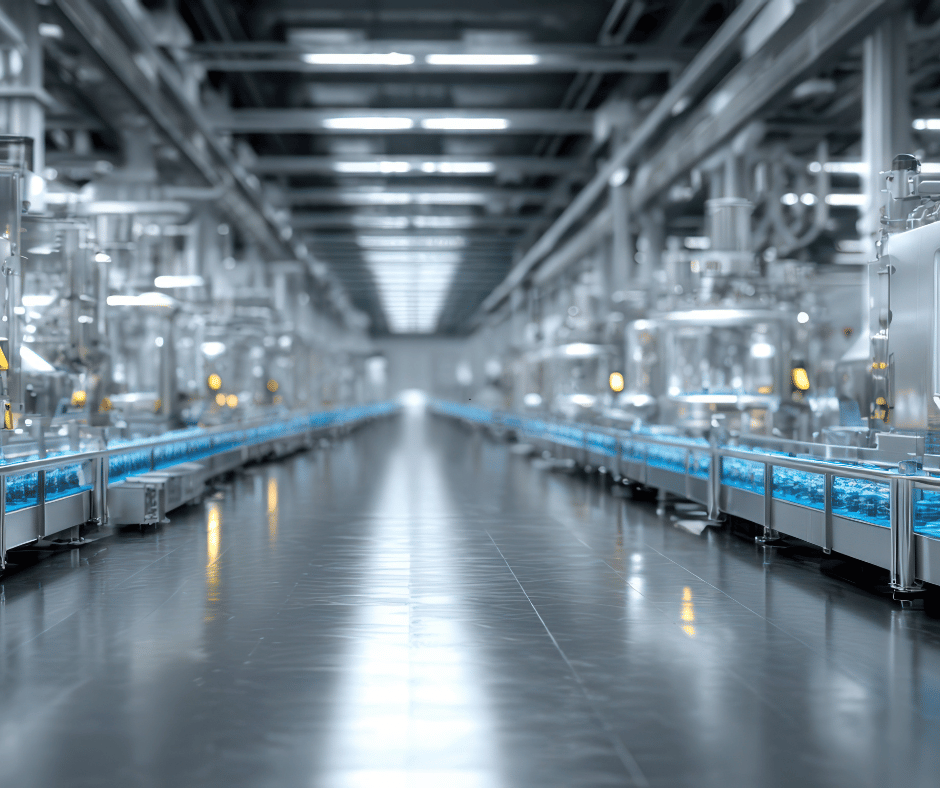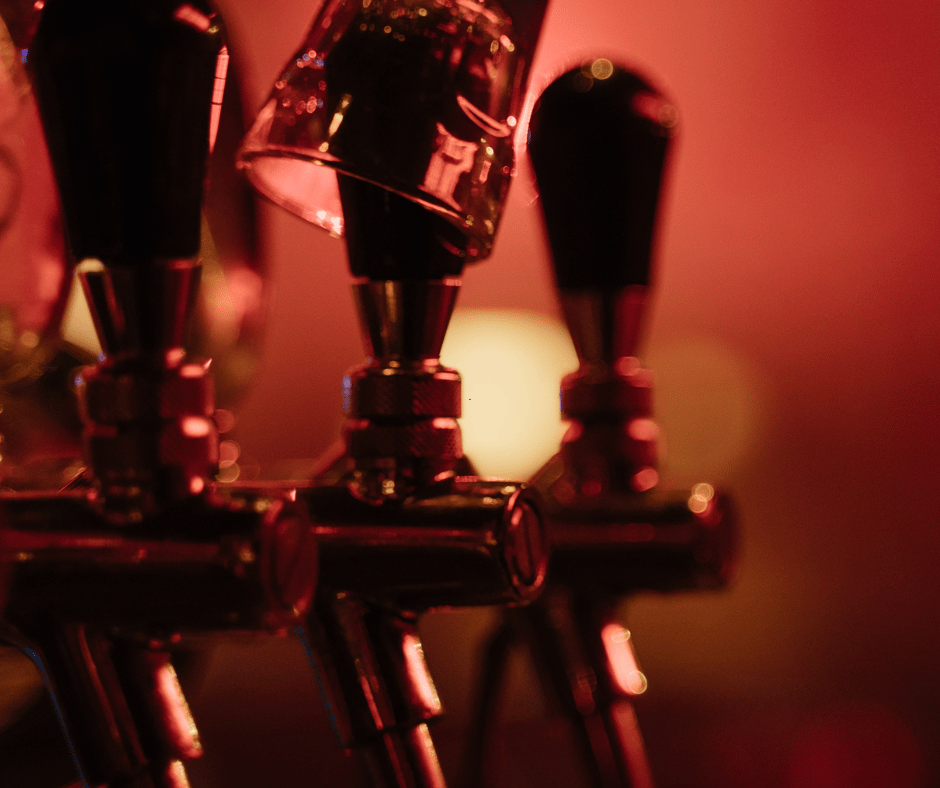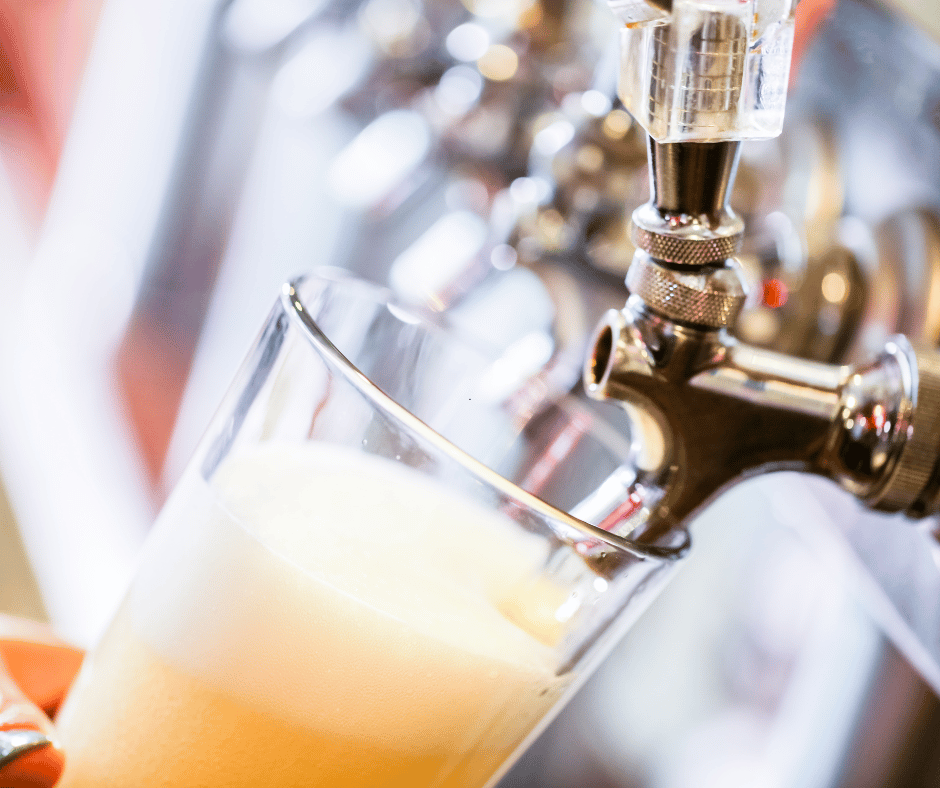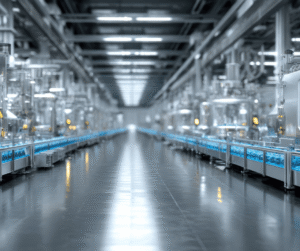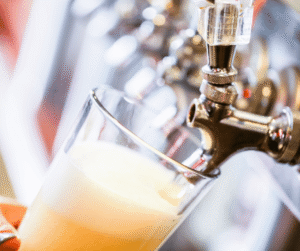It’s Friday night. The bar is full, the queue is growing, and you’ve just poured a pint with no head. It hits the counter looking lifeless. The customer frowns. You try again — same result. You check the keg, nudge the pressure, clean the tap. Still flat. Sound familiar?
When you’re running a pub, bar, or brewery, a flat pint is more than just a technical fault — it’s a dent in service, reputation, and profit. But most of the time, it’s fixable — and often, preventable.
This guide breaks down the most common causes of flat draught beer, including:
- Incorrect CO₂ pressure or gas blend
- Faults in the draught system
- Poor storage temperatures
- Dirty lines or taps
- Low-quality or contaminated CO₂
We’ll explain how draught systems should be set up, walk through common issues, and show you how to diagnose and prevent flat beer — whether you run a pub cellar, brewery taproom, or national chain.
And crucially, we’ll highlight how CO₂ quality — often overlooked — plays a major role in how your beer pours and tastes. With the right system and the right gas, your pints can pour fresh, fizzy, and full of life — every time.

Why Is My Draught Beer Flat?
If your draught beer is pouring flat, it’s usually down to one of two things: the beer has lost its carbonation, or the system isn’t dispensing it correctly. Either way, the end result is the same. A pint with little to no fizz, poor head retention, and an underwhelming drinking experience.
Flat beer is frustrating, but it’s rarely random. In most cases, it comes down to a handful of common issues:
- Low or incorrect CO₂ pressure – If the pressure is too low, the beer won’t stay carbonated or pour properly. Too high, and you’ll get excessive foaming followed by a flat finish.
- Leaks in the gas line – Even small leaks can cause pressure loss, reducing carbonation and leaving beer lifeless.
- Warm beer lines or kegs – CO₂ doesn’t stay in solution when beer gets too warm. Anything above 5°C increases the risk of flat pours.
- Contaminated or low-grade CO₂ – Impurities in your gas supply can affect the way CO₂ interacts with the beer, leading to dull flavour and poor foam.
- Incorrect gas blend – Some systems use a mix of CO₂ and nitrogen. The wrong ratio, especially too much nitrogen, can reduce carbonation.
- Poor system maintenance – Dirty taps, old lines, or neglected components can all impact the beer’s condition at the point of pour.
Understanding the root cause is the first step to fixing flat beer. In the next sections, we’ll explore how your draught system should work, what to check when things go wrong, and how CO₂ quality plays a bigger role than most people realise.
By the way – if you’re wondering “does flat beer contain alcohol” – we have a guide dedicated to answering that.
How Draught Beer Should Be Carbonated and Dispensed
To consistently serve a crisp, lively pint, your draught system needs to be properly balanced. When everything is working as it should, the beer flows smoothly, holds its head, and delivers the right texture and aroma. That comes down to getting four key elements right: pressure, temperature, cleanliness, and gas quality.
What an Ideal Draught Setup Looks Like
- Correct CO₂ pressure: The system should deliver steady, balanced pressure — typically between 10–14 PSI (0.7–1 bar) — depending on the beer style and distance from keg to tap. Too little, and the beer loses its fizz. Too much, and it foams uncontrollably.
- Chilled, consistent temperature: Beer needs to be kept cold — ideally between 3°C and 5°C. Warm lines or uninsulated pipes cause gas to break out of the liquid too early, leaving the beer flat by the time it hits the glass.
- Clean beer lines and taps: Even the best gas setup can’t overcome dirty lines. A buildup of yeast, bacteria, or residue disrupts flow, affects head retention, and alters flavour.
- High-quality CO₂ supply: This is often overlooked. Using pure, food-grade CO₂ helps maintain consistent carbonation and protects the taste of the beer. Contaminants in the gas can cause off-flavours and reduce the beer’s natural sparkle.
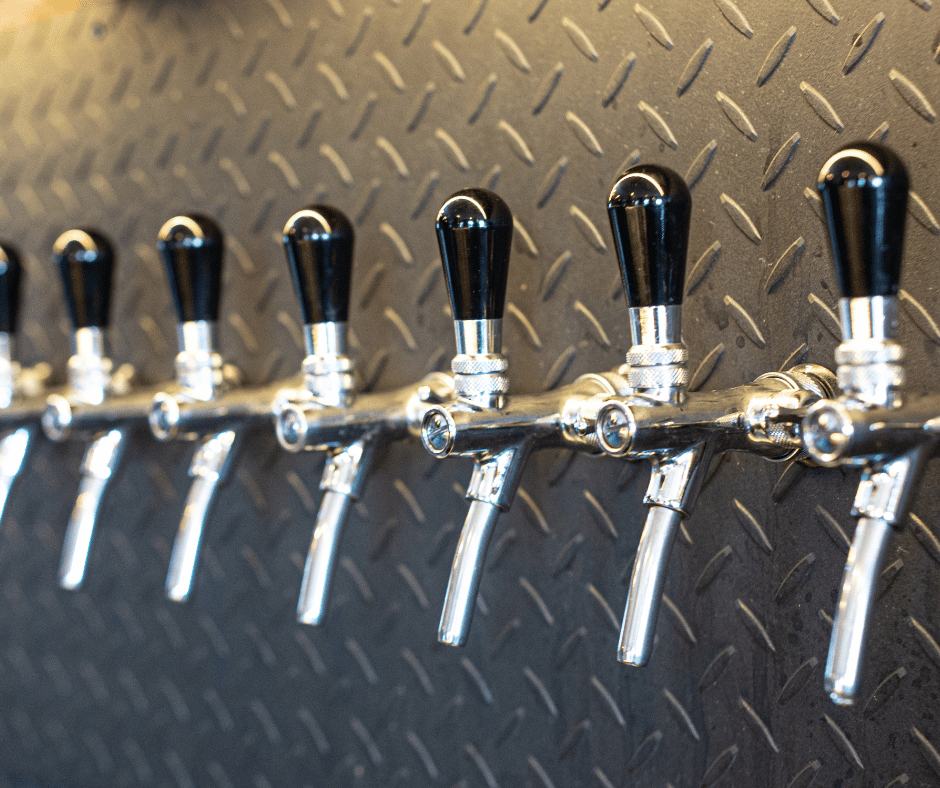
From Gas Tank to Tap: How the System Works
A draught beer system relies on controlled pressure, stable temperatures, and clean components to deliver perfectly carbonated beer from keg to glass. Understanding how each part functions helps identify where things can go wrong — especially when beer is pouring flat.
Let’s look at how the system works step by step:
1. Gas Cylinder and Regulator
The process begins with a gas cylinder, usually filled with either 100% CO₂ or a CO₂/Nitrogen blend, depending on the beer style. The cylinder connects to a gas regulator, which reduces the high pressure in the tank to a safe, controlled level. This regulator is crucial — it ensures that the right amount of gas is delivered to the keg to maintain carbonation and push the beer through the system.
- Most beers dispense best between 10–14 PSI (0.7–1 bar).
- Too much pressure causes excessive foaming.
- Too little pressure results in under-carbonation and flat pours.
2. Gas Line and Keg Coupler
From the regulator, CO₂ flows through the gas line to the keg coupler — the device that taps the keg. The coupler performs two key functions:
- It allows gas to enter the top of the keg, applying pressure.
- It releases beer from the bottom of the keg into the beer line.
This pressure forces the beer upward and out of the keg without disturbing its carbonation — assuming the pressure is stable and the gas is clean.
3. Beer Line and Cooling System
The beer then travels through chilled, insulated lines toward the tap. These lines should remain at 3–5°C throughout their length, often maintained by a python system (a cooling jacket around the lines). If the beer warms up in the line, CO₂ can escape from the liquid too early — leading to a flat pour even if the keg was perfectly carbonated.
- Temperature control is just as important as pressure.
- Any variation in cooling can impact head retention and mouthfeel.
- Condensation or inconsistent chill often points to insulation or system issues.
4. Beer Tap and Dispense
Finally, the beer reaches the tap or faucet, where it is poured into the glass. At this point, the beer should retain enough CO₂ to create a tight, lasting head and deliver a crisp, lively mouthfeel.
A clean, well-poured pint is the result of everything upstream working correctly. But if there’s contamination in the gas, fluctuating pressure, or poor cooling, it’ll show at the tap.
When any link in this chain is compromised — especially the quality of CO₂ — the result is often a flat or off-tasting beer. Impurities in gas lines, like benzene, sulphur, or residual oils, can disrupt head formation and carbonation stability. That’s why systems like Sure Purity’s Carboguard and Carboguard Mini are essential. They filter out contaminants before the gas enters your keg or post-mix line, preserving the quality and consistency your customers expect.
6 Common Reasons Your Beer Is Coming Out Flat
When a pint of draught beer pours flat, the problem usually comes down to a few key culprits. Each one affects how carbonation is retained or delivered, and most can be solved with routine checks and proper system setup. Below, we break down the six most common causes of flat beer, and how to fix them.
Incorrect CO₂ Pressure
If your draught system isn’t set to the right pressure, carbonation suffers. Too little pressure allows CO₂ to escape from the beer before or during dispense, leading to flat pours. On the flip side, too much pressure can cause excessive foaming and loss of gas as the beer hits the glass.
Most beers dispense best between 10–14 PSI (0.7–1 bar), depending on line length, elevation, and beer style. Always check manufacturer guidelines and adjust your regulator to suit the specific product. Keep in mind that even small pressure variations can change how beer looks, tastes, and feels.
Leaks or Faults in the Gas Line
Even a tiny leak in the gas line can cause a steady drop in pressure — which leads to under-carbonated beer at the tap. These leaks are often silent, slow, and easy to miss, especially in busy cellar environments.
To check for gas leaks:
- Spray connections with a mild soapy water solution — bubbles will form at the leak.
- Monitor regulator pressure when the system is idle. A slow drop signals a leak.
- Inspect all fittings, clamps, and seals regularly.
Sealing these leaks restores consistent pressure and keeps carbonation levels where they should be.
Warm Beer or Beer Lines
Temperature is one of the most overlooked factors in draught beer quality. Beer that rises above 5°C begins to lose CO₂ rapidly. Even if the keg is chilled, warm or uninsulated lines can warm the beer in transit — causing it to pour flat and lifeless.
To avoid this:
- Store kegs in a cold room or temperature-controlled cellar.
- Use glycol-cooled python lines or insulation to keep beer cold all the way to the tap.
- Check that your line cooler is working consistently and hasn’t drifted off target.
A cold system holds carbonation better and ensures beer pours with the correct head and mouthfeel.
Poor Gas Quality or Contamination
Not all CO₂ is created equal. If your gas supply contains impurities, it can interfere with both flavour and carbonation stability. Contaminants like sulphur compounds, benzene, or oil vapours can suppress foam, dull mouthfeel, and introduce unwanted chemical notes.
This is often invisible and misdiagnosed — but easily preventable with the right equipment.
Our Carboguard and Carboguard Mini are CO₂ filtration systems that remove these contaminants before they reach your keg or post-mix line. Installed between the gas supply and the beverage system, they act as a final safeguard to protect product quality and taste.
Incorrect Gas Blend (e.g. Too Much Nitrogen)
Many draught systems use gas blends, particularly for stouts, ales, or long-draw setups. These blends usually combine CO₂ with nitrogen. If the blend contains too much nitrogen, the beer may pour soft or flat, as nitrogen does not carbonate beer in the same way CO₂ does.
To get the balance right:
- Use 100% CO₂ for lagers, IPAs, and most carbonated beers.
- Use 60/40 or 70/30 CO₂/Nitrogen blends for stouts or low-carbonation ales.
- Check that the correct cylinder is connected — gas mix confusion is common in busy venues.
Choosing the wrong blend leads to poor head retention and disappointing pours — even if the pressure and temperature are correct.

Dirty Taps or Lines
Even a perfect setup can fall apart if the lines and taps are dirty. Over time, yeast, proteins, and beer stone build up in lines, creating a breeding ground for bacteria. These deposits not only affect flavour — they disrupt pour quality, foam, and carbonation retention.
Best practices include:
- Cleaning lines every 7 days (or as recommended by your brewery).
- Using professional cleaning kits or services with food-safe chemicals.
- Flushing the system thoroughly before and after cleaning cycles.
Clean lines don’t just protect beer quality. They help your system deliver the consistent, lively pour your customers expect.
How CO₂ Purity Affects Draught Beer Quality
When draught beer doesn’t taste right — even with the right pressure, temperature, and clean lines — the problem could be your gas supply. CO₂ purity grades plays a major role in how beer pours, how long the head lasts, and how it tastes in the glass.
Poor-quality CO₂ can lead to flat beer, suppress foam, and introduce off-flavours. It may not be immediately obvious, but if your beer seems dull, inconsistent, or chemically tainted, gas contamination could be the cause.
How Does CO₂ Become Contaminated?
CO₂ used in beverage systems must meet strict food-grade standards. However, in reality, not all cylinders or supply chains deliver gas that’s free from harmful impurities. Common contaminants found in unfiltered or industrial CO₂ include:
- Sulphur compounds – which smell like rotten eggs
- Benzene – a volatile organic compound with a sweet, chemical odour
- Hydrocarbons and oil vapours – which affect taste and mouthfeel
- Methanol or solvent traces – which can dull flavours and cause safety concerns
These impurities can enter the system through cylinders, bulk tanks, or gas supply lines, especially in venues or facilities where gas systems are shared, neglected, or not regularly maintained. Over time, even tiny amounts of contamination can damage beer quality and customer perception. Read our full guide on how to detect contaminants in your co2 supply.

How to Prevent Flat Beer in the Future
Flat beer is avoidable with the right setup and regular checks. You can read our full guide on how to prevent flat beer, but here are some quick tips:
- Monitor CO₂ pressure regularly, keeping PSI/bar within the ideal range for each beer style
- Use filtered, food-grade CO₂ to avoid contamination that affects taste and carbonation
- Clean tap lines weekly to prevent build-up that disrupts pour quality
- Store kegs between 3–5°C and keep lines chilled all the way to the tap
- Work with a reliable gas supplier who understands beverage-grade standards
Installing a CO₂ filter like Carboguard or Carboguard Mini gives your draught system an extra layer of protection.
FAQ’s
Can contaminated CO₂ cause my draught beer to go flat?
Yes, contaminated CO₂ can cause draught beer to go flat. Impurities such as sulphur compounds, benzene, or oil vapours can interfere with carbonation and suppress foam stability. Using a certified gas filter like Sure Purity’s Carboguard removes these contaminants, protecting both carbonation and taste in draught beer systems.
What pressure should I use for my draught beer system to avoid flat pours?
Most draught systems perform best at 10–14 PSI (0.7–1 bar), depending on beer style, keg distance, and gas blend. If pressure is too low, beer will lose carbonation before dispense. Use a reliable gas regulator and monitor pressure regularly to maintain proper carbonation and head retention.
How do I know if my beer gas is causing flat pours?
If your pressure, temperature, and lines are all correct but beer still pours flat, your gas may be the issue. Signs include dull flavour, reduced foam, and inconsistent head. Fitting a CO₂ filter like Carboguard Mini can confirm and eliminate gas-related quality issues in pubs, bars, and fast-food systems.
Should I use 100% CO₂ or a gas blend for draught beer?
Use 100% CO₂ for lagers, IPAs, and most carbonated beers. Use a CO₂/Nitrogen blend (e.g. 70/30) for stouts or long-draw systems where lower carbonation is required. Using the wrong blend — particularly too much nitrogen — can lead to flat or under-carbonated beer, even with the right pressure and temperature.
Final Thoughts
Flat beer isn’t just frustrating. It’s a quality issue that can cost you sales, customer satisfaction, and reputation. But the good news is, it’s usually easy to fix. With the right pressure, clean lines, cold storage, and the correct gas setup, your draught system can deliver consistently fresh, well-carbonated beer.
One of the most overlooked factors is CO₂ quality. Even if everything else is perfect, contaminated or low-grade gas can flatten beer and spoil the taste. That’s why gas filtration is just as important as pressure regulation or cleaning routines.
By combining proper system setup with filtered, food-grade CO₂, you protect the integrity of every pint.
Our Carboguard and Carboguard Mini offer trusted, commercial-grade gas filtration to keep your beer tasting fresh, from keg to glass.
For help choosing the right solution or improving your draught setup, get in touch with us today.

